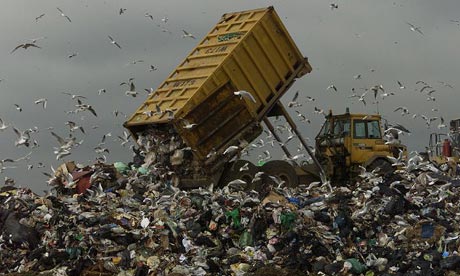
Molland, Judy. “Giant Landfill Becomes Home To Several Rare Species.” care2.com. n.p., 16 May 2013. Web. 16 May 2014. http://www.care2.com/causes/giant-london-landfill-becomes-home-to-several-rare-species.htm
One of the formerly largest landfills in Europe, the Mucking landfill in Essex, England, has been converted into a nature reserve. Over a 50 year period, the site has slowly been created due to the continuous amount of garbage and waste being compressed into layers within the landfill. After the restoration and completion of the nature reserve, there are now walking paths and venues in which visitors can bird-watch and see species that weren’t originally in the Essex area. According to the article, there are “several vulnerable species of bird making their home” in the new area as well as other species of “harvest mice, brown hares, wasp spiders and great crest newts” (Molland). Although I think the transformation from a landfill to a “natural” space is a beneficial step towards becoming environmentally aware, I wonder how the presence of these new species will affect local ecosystems.The article stresses that these species weren’t present before, and the new habitat being created may or may not be beneficial in the long run.
This article doesn’t really consider the possibility of the ecosystem being built on a man-made venue, and how that might affect the necessary balance between species. Also, it did seem as if the article was one-sided in that it highlighted how amazing and great the new park is, and not how it came to be in the first place. I wanted to know more about the species that have been attracted to this site in the first place and how they might be benefiting from this newly cultivated space. Although this article did strike me as somewhat utopian (it has a sort of “let’s build parks everywhere” tone) I do think it’s interesting how a man-made garbage site, which initially harms the environment, has, without effort, attracted species that wouldn’t necessarily be within the same habitat if the landfill wasn’t created.
Further Reading:
http://www.telegraph.co.uk/earth/earthnews/10051311/From-dump-to-haven-for-rare-species.html



